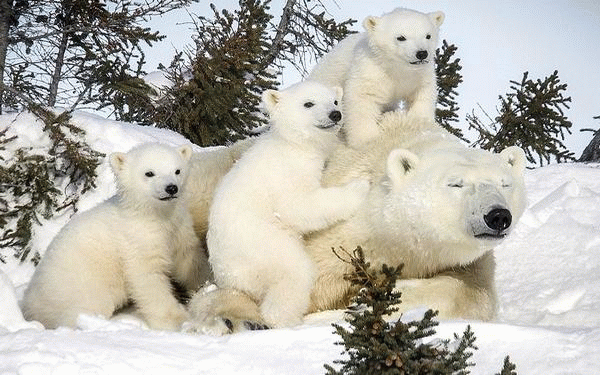Polar bears are in fact an efficient killers and, Subzero climax slayers that can weigh more than 700kg and outlook almost 10-feet tall. One more capability in them that they are moreover one of nature’s greatest photogenic or appealing living being, competent to look either at the time awful and cute, and expert of turn out some very entertaining flashes.
U.S. government reported Canada’s High Arctic might turn out to be the last unwavering shelter for polar bears as climate variation liquefies gone their pursuing grounds.
According to our sources the report projects mentioned such important point that their Residents in a not the same place in Russia, Norway Alaska, and nearby Hudson Bay, northern Quebec and Newfoundland and Labrador are to be expected to fall or greatly drop by the year 2050 as worldwide temperatures increase.
Although rendering to reasonable situation for greenhouse gas releases, with an adequate amount of decreases worldwide to keep the regular global temperature slog to no more than two degrees, If we consider conferring to research the polar bear inhabitants in northern Nunavut is most probable to keep on unchanging and It’s dam sure that this is the best chance of increasing, in their population.
Our reliable sources informed that on the reference of the U.S. Geological Survey, they collect a research report consist of 124-page, which is published current week by U.S. Department of the Interior.
Sources up-to-date, “It’s observed that scientists have cautioned from many years that climate change frighten polar bear residents. Rendering to the U.S. Geological Survey research likens that risk in contradiction of others just oil and gas shipping over the North, pollution and shooting of the bears, which is legitimate in Canada, the U.S. and as well as in Greenland.
It determines that sea ice loss is the extreme hazard to their endurance, by a substantial margin. It is perceived almost a third of the world’s polar bears those in Alaska, Russia and Norway may possibly be in about to happen danger from greenhouse gas discharges in next eras. Such areas of the Freezing point have agonized some of the most intense drops in sea ice.
As Rebecca Noblin who is the Alaska director for the Center for Biological Diversity stated, “It’s true that Polar bears are really in big danger.” Moreover she expressed that,
There are some other process come into being through which we can take to slow the debility of polar bears, however for future we have to act upon those strategies from which we can save them in the Arctic is to lessen greenhouse gas productions.”

